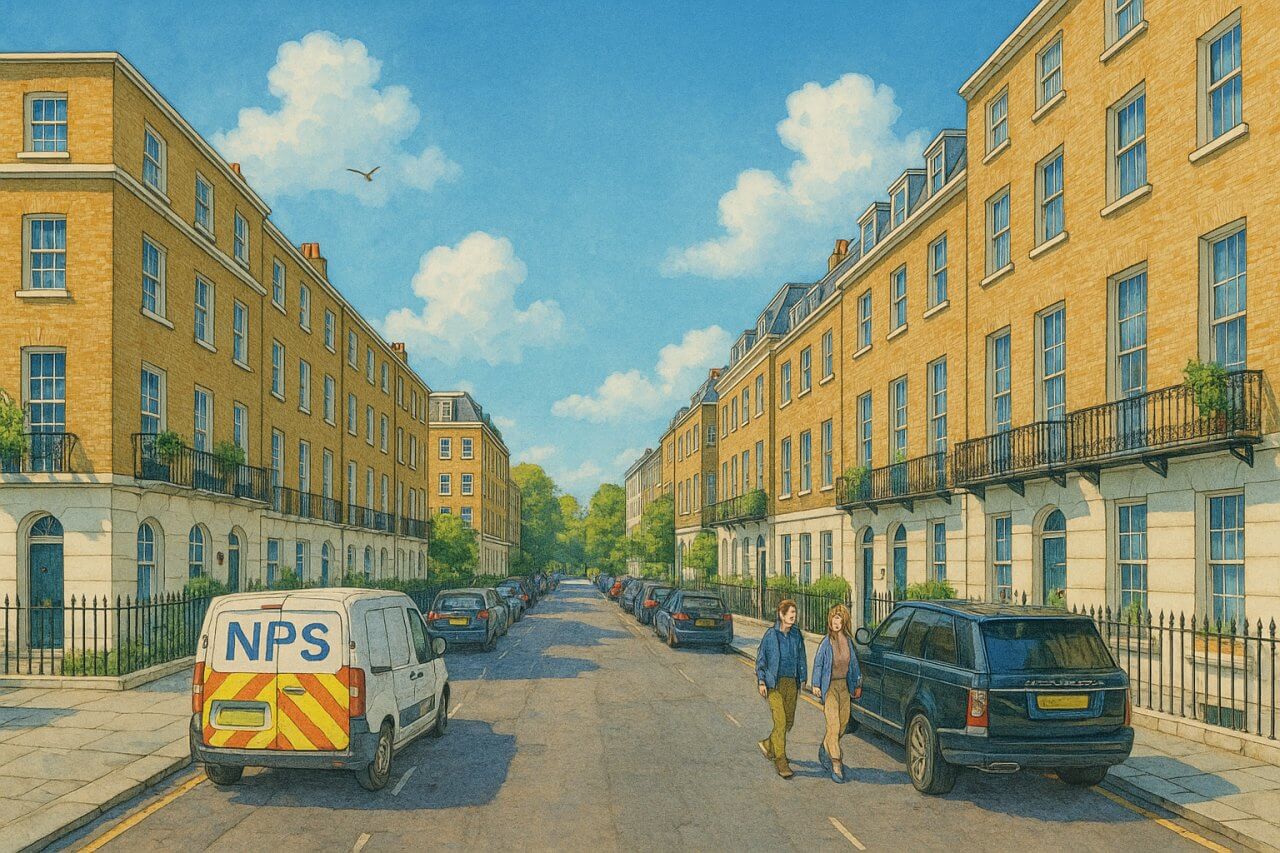
Wilton Street, London
Wilton Street is a short but distinguished residential street in the heart of Belgravia, one of London’s most prestigious districts. Measuring just 207 metres (679 feet) in length, it runs in a north-west to south-east direction, linking Grosvenor Place at its southern end to Upper Belgrave Street to the north.
Location and Layout
Wilton Street forms a roughly straight route, with Chester Mews meeting it at a T-junction and Wilton Mews intersecting it on the west. The road is two-way, though traffic is typically light, reflecting its largely residential nature. Its proximity to major roads gives it excellent accessibility, while its seclusion provides peace and quiet to residents.
History and Development
Wilton Street was laid out in the early 19th century during the major development of Belgravia under the auspices of the Grosvenor family. Much of Belgravia, including Wilton Street, was developed under the direction of Thomas Cubitt, the master builder whose influence shaped much of West London's architectural identity during the Regency and early Victorian periods.
The street features elegant terraced houses typical of Belgravia—stucco-fronted façades, sash windows, and wrought iron railings. Many of the original structures have been preserved or sensitively refurbished, retaining their classical aesthetic while incorporating modern luxuries.
Origin and Pronunciation of the Name
The name “Wilton Street” is believed to derive from Wilton House, the country seat of the Earls of Pembroke near Salisbury, Wiltshire. The title of Earl of Pembroke has historical connections to the Grosvenor family through aristocratic alliances, and the naming was likely a nod to this heritage.
The name is pronounced WILL-tən, with the emphasis on the first syllable. In the International Phonetic Alphabet, it is transcribed as /ˈwɪltən/. 
Character and Atmosphere
Wilton Street offers a quiet, refined atmosphere in contrast to the bustle of nearby thoroughfares. Mature plane trees line the street, and the homes—many of them townhouses with multiple storeys—exude understated affluence. It is a peaceful street where embassies, private residences, and diplomatic apartments coexist with quiet dignity.
The area is noted for its meticulous upkeep and limited commercial activity, contributing to its exclusive residential character.
Nearby Points of Interest
Though quiet itself, Wilton Street lies close to many of London’s key attractions:
- Buckingham Palace – Just a short walk south-east along Grosvenor Place.
- Belgrave Square – An impressive garden square lined with embassies and historic mansions.
- Hyde Park Corner – Home to Wellington Arch and a major gateway to Hyde Park.
- The Goring Hotel – A luxury hotel favoured by royals, located nearby on Beeston Place.
Real Estate and Property Prices
As of early 2025, properties on Wilton Street reflect Belgravia’s premium market status. A typical townhouse here might be around 2,500–3,500 sq ft (approx. 230–325 sq m), with prices ranging between £7 million and £12 million, depending on the condition and features of the home.
Flats in converted townhouses can command upwards of £4,000 per sq ft (£43,000 per sq m), which is significantly above the London average. Rental rates are similarly high, often exceeding £2,000 per week for well-appointed flats.
Transport Connections
London Underground
Wilton Street is within walking distance of several Underground stations:
- Hyde Park Corner (Piccadilly line) – approx. 5 minutes’ walk to the north-west.
- Victoria Station (Victoria, District, Circle lines) – approx. 10 minutes’ walk to the south-east.
- Green Park (Piccadilly, Jubilee, Victoria lines) – slightly further, around 12–15 minutes on foot.
Bus Services
Multiple bus stops line nearby Grosvenor Place and Upper Belgrave Street. Routes frequently serving this area include:
- Bus 2 (Victoria to Marylebone)
- Bus 36 (Queen’s Park to New Cross)
- Bus 16 (Victoria to Cricklewood)
These provide convenient access to central, north, and south London.
Fun Fact
Wilton Street’s elegant seclusion has made it a discreet residence for diplomats and notable figures. Several houses on the street have served as embassies or consular residences over the years. Because of its close proximity to Buckingham Palace, the area is under high-security surveillance—something that’s appreciated by its residents, even if barely noticed by passers-by.
Quick Facts
- Location: Belgravia, City of Westminster
- Length: 207 metres (679 feet)
- Connections: Grosvenor Place (south), Upper Belgrave Street (north)
- Intersecting streets: Chester Mews (T-junction), Melton Mews (cross street)
- Origin of name: Named after Wilton House; related to aristocratic lineage
- Pronunciation: WILL-tən /ˈwɪltən/
- Character: Quiet, elegant, residential with Georgian architecture
- Nearby sights: Buckingham Palace, Belgrave Square, Hyde Park Corner
- Real estate (2025): £7M–£12M for houses, £4,000+ per sq ft for flats
- Nearest Tube: Hyde Park Corner (Piccadilly), Victoria (Victoria, Circle, District)
- Nearby buses: Routes 2, 16, 36 via Grosvenor Place
- Notable: Popular with diplomats; secure and centrally located
Map of Wilton Street, London

Painting of Wilton Street, London (View image in full size)